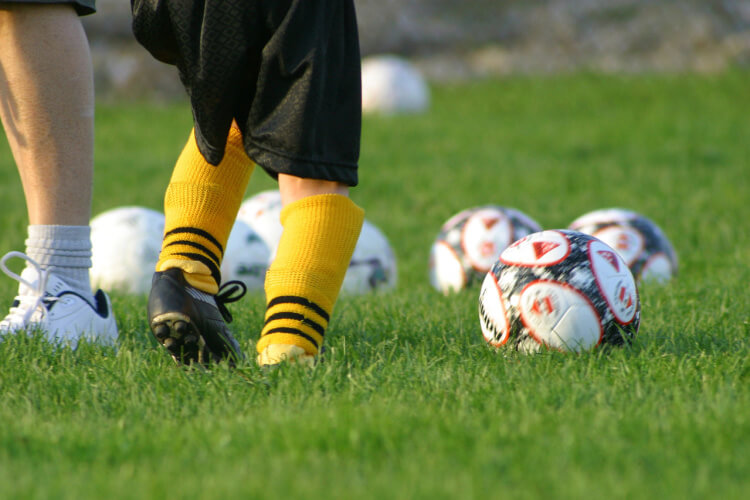PHE America Repeats
10 previously published articles in 10 days that we think you will enjoy
Reprint 7 of 10
(Originally published – February 1, 2015)
A few months ago I was invited to help review a middle school PE program. It wasn’t what I expected. I soon learned that some of America’s richest and best-known families pay a hefty sum to send their kids to this private school. I was intrigued to understand why. And it soon became apparent. The culture of the school was not what I expected.

The hallways and classrooms were quiet. There was no jostling in the hallways between classes. No yelling in the cafeteria. Students were, well, studious. Learning was something they valued. And not only for test scores.
As it turned out, more than 90% of the middle school students participated in the school’s after school athletic program. NINETY percent! Hard to believe huh? It was for me and of course I wondered why. What was the secret? If replicated nationwide we’d fast eradicate the obesity epidemic. I was especially intrigued about the contribution of the PE program.
It turned out that the school’s PE facilities were not especially impressive. The equipment was limited and mostly old. Little use was being made of technology. Neither national nor state standards were guiding assessment The curriculum was pretty conventional in fact rather dated. Among the PE teaching faculty there were huge differences in experience and teacher preparation. So, no big secrets revealed here.
But observing the teachers, something quickly became apparent. In every class, there was a caring and respectful teacher-student relationship. When teachers spoke students listened. No discipline problems. Zero. And regardless of differences in teaching skills – which there were – students seemed to accept that what was being taught was worth their time and effort. They valued it. And in thinking about successful teaching it’s this valuing that I think is important.
Just recently, I again found myself in a different school district that was looking to review its PE program. How different this was. A United Nations of cultures and languages. Students from homes where education was valued or ignored. Students from wealth and poverty. Students well fed and hungry. Students in gangs or fearful of gangs. Students abused or loved. All coming together in classes and gymnasiums where teachers were expected to educate them successfully. And to provide evidence of this success.
These experiences made me think about the challenges facing today’s physical education teachers and what we expect from them. I fear too often our thinking is a more than a bit unrealistic. It reminded me of Don Hellison’s work in some of the toughest teaching environments imaginable. Success for Don was getting students to respect one another and learn how to behave appropriately. Whether or not they extended their elbow when overhead throwing was pretty irrelevant to him. He was more concerned that they weren’t throwing knives!
Now, after three decades or so of PE teaching, and helping to prepare hundreds of future PE teachers I continue to wonder what successful PE teaching looks like. Like so many of my colleagues, I think I’ve spent too long assuming that today’s youth are miniature versions of ME. I didn’t go to a private school but my parents were every bit as supportive as the ones described above. I got to participate and become reasonably competent in all sorts of team and individual sports, leisure and recreational activities. Not surprisingly then, as a physical educator, I had in mind that all kids should be similarly motivated to learn lots of sport skills and want to be physically active. Oh but that were true but of course it isn’t.
Around the county, the opportunities and challenges today’s PE teachers face differ immensely. I’m sure there are places where it makes sense and it’s doable for teachers to successfully teach a wide range of physical skills. To them the vision of preparing their students to be competent and confident movers makes sense. But I suspect in far more places this vision is an unrealistic dream. They have neither the facilities nor equipment. They see their students infrequently and grouped in impossibly large numbers. Their students bring vastly different abilities and interests. But perhaps most importantly, so many of their students have little interest in what physical educators want to teach them. They don’t value the sports and physical activities we value. Today’s students don’t want to be like US.
Successful PE teaching is not cloning ourselves. Most of our students do not want to spend much time competing in team sports. Why would they? Having their inadequacies revealed publicly makes little sense. Nor will many of them hit golf or tennis balls in their adult leisure time. It’s too expensive and too time consuming for most of us. And going regularly to a gym is both costly and boring. But in honesty, focusing on the content of our curriculum is perhaps muddling our thinking. None of us have any idea what activities will motivate today’s youth to choose to be physically active when they are not with us or later as adults. But maybe that’s the point. Perhaps we shouldn’t concern ourselves so much with what our students will do but rather that they will choose to do something. That whatever we do in our PE classes leads to them valuing being physically active and leading healthy lives.
If you think about it, many sedentary young people and even more adults don’t lack physical skills or not know the benefits of being active. They have played sports and lots of different physical activities. But sadly they simply don’t value living a physically active life. It’s not important to them. Shouldn’t changing this value be the best measure of successful physical education teaching?
